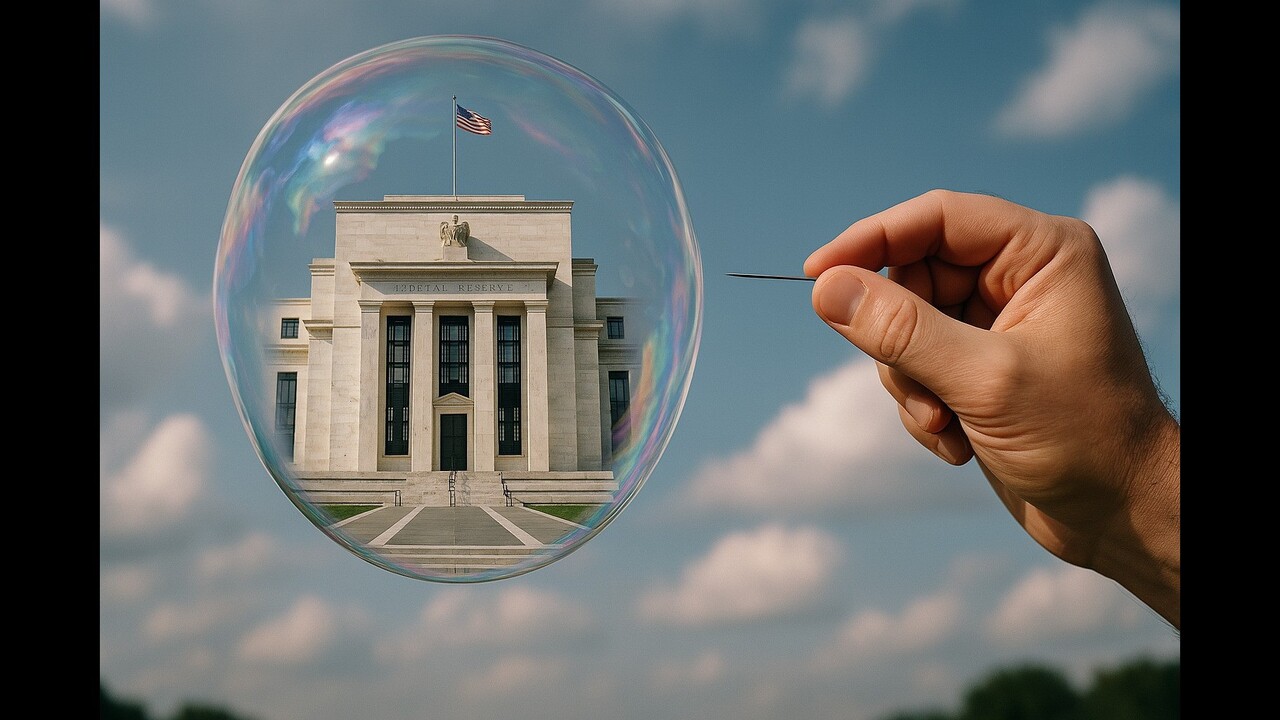(Money Metals News Service) As global markets react to trade tensions and tariff rumors, the real story may lie beneath the headlines.
In the latest Money Metals Midweek Memo, host Mike Maharrey argues that while tariffs dominate the financial news cycle, they’re just a subplot in a much deeper economic drama—one driven by monetary malfeasance and the long-term consequences of easy money.
Uncertainty Reigns: Tariffs Trigger Volatility
This week’s market action has been chaotic. Stocks plunged, gold prices whipsawed with $10–$20 swings in minutes, and rumors briefly sent markets soaring—only to crash again when the rumors were denied.
On Monday, gold dipped below $3,000/oz, then rebounded to $3,083/oz by Tuesday morning. The VIX volatility index surged to 57.85, approaching levels seen in the early days of the pandemic (66) and the 2008 financial crisis (79).
A fleeting rumor that President Trump would pause tariffs for 90 days sparked a stock market rally—only to be quashed within 30 minutes. Maharrey emphasized that this level of uncertainty paralyzes entrepreneurs, investors, and businesses alike.
“Uncertainty is almost worse than a bad policy,” Maharrey notes. “It’s impossible to make smart decisions when you don’t know what the rules will be in two days.”
The Bigger Picture: Monetary Policy, Not Just Tariffs
Though tariffs have sparked recent market turmoil, Maharrey warns they may be merely the pin that pops a much larger stock market bubble—a bubble decades in the making.
At the heart of the issue? The U.S. economy’s addiction to easy money. Since the 2008 financial crisis, the Federal Reserve has inflated asset prices through low interest rates and quantitative easing (QE). Maharrey suggests that without these artificial policies, the market would have faced a full-blown crisis years ago.
“It’s a bubble economy fueled by monetary malfeasance,” Maharrey explains. “Every bubble needs a pin—and tariffs might just be it.”
Dow-to-Gold Ratio: A Revealing Metric
To illustrate the hidden instability, Maharrey examined the Dow-to-Gold Ratio—a metric comparing the Dow Jones Industrial Average to the price of gold.
- Current ratio: ~12.5:1 (i.e., 12.5 oz of gold to buy the Dow).
- Historical low: 1:1 in 1980, during gold’s last historic bull run.
- Peak in 2000: 43:1, fueled by the dot-com bubble.
Maharrey explains that when this ratio falls, it often precedes or coincides with a financial crisis or major correction. A return to 5:1 could imply $7,500/oz gold, even if the Dow holds steady. If the Dow falls to 20,000, the gold price could still reach $4,000/oz.
“A breakdown in this ratio might signal a major opportunity: it could be time to rotate out of stocks and into gold.”
Silver: Historically Undervalued and Set for Gains
The Gold-to-Silver Ratio is currently over 100:1, far above its modern historical average of 40:1 to 60:1. Maharrey points out that during previous gold bull markets, silver has outperformed, especially in the later stages.
“Silver is significantly undervalued compared to gold. Based on historical metrics, it’s a bargain right now.”
Easy Money: The True Driver of Market Bubbles
Tracing the last several decades, Maharrey outlines a repeating cycle:
- The Fed loosens monetary policy (low rates, Quantitative Easing).
- Asset prices inflate (stocks, real estate, etc.).
- The Fed tightens policy.
- Markets crash.
- The Fed loosens again—this time with even more stimulus.
This pattern has repeated through the dot-com crash, 2008 financial crisis, and COVID-19 pandemic. The pandemic, he argues, gave the Fed cover to “go nuclear” with QE, artificially inflating markets once more.
“It takes more and more of the easy money drug to keep the economy high. And it always shows up somewhere—stocks, real estate, even Bitcoin.”
Gold: The Lifeline in Crisis
Maharrey concluded with a reminder that gold is real money—recognized globally, portable, and valuable in times of political and economic upheaval.
He points to Russia’s reliance on gold amid sanctions as a case study in gold’s resilience.
“When dollars are rejected, gold still buys,” he says.
Final Thoughts: Prepare Before the Next Crisis
Whether or not tariffs subside, Maharrey believes a larger reckoning is inevitable. The stock market remains overvalued, easy money policies are unsustainable, and the Dow-to-Gold Ratio is flashing warning signs.
Investors, he argues, should take steps now:
- Consider rotating out of overvalued equities.
- Increase exposure to gold—and especially silver.
- Don’t wait for the next crisis to get your lifeline in place.
“It’s not too late. But when chaos hits, you’ll wish you had real money in hand.”
Call to Action
For personalized guidance, contact a Money Metals precious metals specialist at 1-800-800-1865, or visit MoneyMetals.com to shop, chat online, or learn more.
Stay informed. Subscribe to the Midweek Memo and the Friday Market Wrap Podcast for weekly insights and interviews from the world of sound money, gold, and investing.

